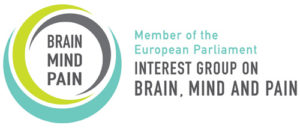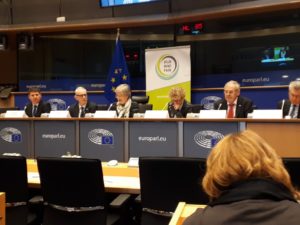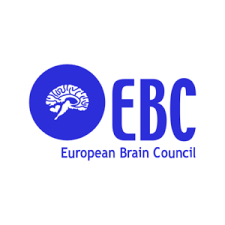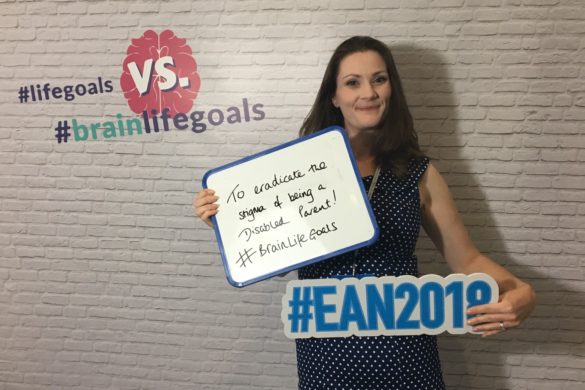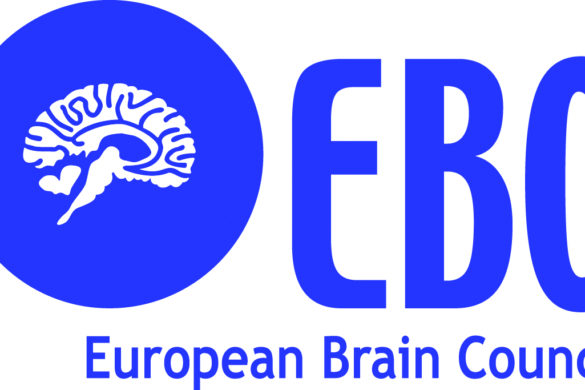Highlights from the European Parliament meeting ‘Ensuring equitable access to high-quality treatment in brain, mind and pain disorders – Case-Studies from across Europe’ on 22 November, 2017.
A meeting of the Members of the European Parliament Interest Group on Brain, Mind and Pain, in partnership with the European Academy of Neurology and the European Pain Federation, was hosted by Lieve Wierinck, a Belgian MEP with a background in the pharmaceutical industry. This meeting was attended by 80 policy makers, patients and industry representatives. Ms Wierink reminded the audience that the right to health is a basic social right enshrined in The EU’s Charter of Fundamental Rights of the European Union: ‘’Everyone has the right of access to preventive healthcare and the right to benefit from medical treatment’’ – yet it is still not a reality for all of us. ‘Large health inequalities persist in the EU and many patients do not have access to effective treatment for neurological and pain disorders,’ said Ms Wierinck. ‘Uncontrolled symptoms worsen the personal and economic impact of these disorders. New and better treatments are urgently needed.’
Prof. Guenther Deuschl was the first health-care professional to speak. He outlined the EAN’s role and purpose to the meeting. He spoke about the need for concerted action between patients, physicians and other stakeholders – working with policy makers for equal access to high quality treatment for neurology and chronic pain patients in Europe.
In the session ‘Case-Studies from across Europe’, Prof. Franz Fazekas summarised the results of a survey by the European Stroke Organisation highlighting stroke as the most common cause of death in Europe with extensive variation according to country. Drawing on the outcomes of an EAN study, he explained the main pillars of treatment to save lives had been the introduction of stroke units across Europe – now numbering 200 – and intravenous treatment for thrombosis. There were significant differences in care standards in Europe leading to excessive mortality and lost quality of life. Europe- wide political lobbying is needed for more research and equitable treatments. Professional medical societies can help by producing and sharing guidelines.
For Parkinson’s disease, Prof. Deuschl explained that there are about 1.25 million patients across Europe with 303,000 new diagnoses every year. Treatment options are available or under development but not all equally accessible for all patients. The European Brain Council’s Value of Treatment project addressed this issue by using case studies to identify treatment and patient journey gaps with economic analysis and recommended solutions. Major issues were late diagnosis, access to medication, including advanced treatments, e.g. deep brain stimulation, access to specialist care, need for more research and data on numbers of specialist neurologists and their training.
Prof. Christopher Eccleston gave the example of pain. Prof. Eccleston directs the centre for pain research at the University of Bath, UK, home to pain and rehabilitation scientists active in the fields of evidence-based pain, e-health, therapy innovation, adolescent and family pain, and individual differences. He reflected on his book ‘European Pain Management’, the first comprehensive publication on the state of pain care and access to treatment across Europe.
The Patient’s Perspective was chaired by Mrs Nicola Bedlington, Director of the European Patients’ Forum (EPF). Nicola introduced the vision, work and structure of the EPF, now representing 74 umbrella organisations and national patient coalitions. The EPF is working with members’ organisations towards universal achievement of Sustainable Development Goals by 2030. It has set up a Patient Access Group to monitor each county’s progress against the Goals. A multi stakeholder approach to integration at national level with county specific objectives is promoted.
MS Monika Benson, from Dystonia Europe, said that an estimated half a million people live with dystonia in Europe. There is no cure but it can be effectively managed, usually by injecting botulinum toxin into affected muscles every three months. As long as patients are regularly treated, their quality of life, including employability, is mostly good. Issues for patients are: inequitable access to treatments – not every country has approved injections; cuts in healthcare costs – in some countries patients pay for treatments themselves with long-term affordability problems; treatment regimes in some countries are prolonged e.g. injections every four months instead of three. Other problems are the waiting times for referrals to a neurologist and late or missed diagnosis. Solutions would include involving more patient advocates in awareness raising and better education for general practitioners to inform earlier diagnosis.
Mr. Neil Betteridge, for Rheumatic and Musculoskeletal Diseases, developed juvenile arthritis when only 4 years old and became a patient advocate sixteen years ago. His personal mission has been to promote the need for medical professionals to become more patient focussed. There are over 200 known variants of rheumatic and musculoskeletal diseases ranging from gout to rheumatoid arthritis. There are ongoing equity issues in ensuring access to treatments for all. More advocacy associations were needed to ensure the patient voice and funding for more scientific and social research and more health professionals – clinicians, physiotherapists, psychologists etc.
Ms Astri Arnesen, for Huntington’s disease, explained there is no known cure but helpful treatments are available, advised by multidisciplinary teams depending on disease progression at different stages of life. Inequity of access to treatment is a common problem in Europe with the need for greater awareness and more patient associations. The disease brings social stigma and loss of self-esteem with families ashamed that their inherited genes are often the cause. The situation for Huntington’s disease patients in some European countries is improving thanks to the work of the European Reference Networks. Digital and telemedicine developments are helping but a strategic, structured approach to campaigning for change is essential. Political will and cost efficiency are key with national funding to make a real difference. The Norwegian Government has pledged one million euros per annum, which has been a good start in helping to raise awareness.
Mr Joop van Griensven, for Chronic Pain, emphasised the need for high quality treatment dependant on the length of time taken to diagnose a condition and how long a patient has suffered from chronic pain. Wait times for diagnosis and treatment are common issues in Europe, and treatments are not matching expectations with only 40% of patients expressing satisfaction in a recent survey. There is an outstanding issue of defining and benchmarking a quality care standard for chronic pain.
We then looked to the future and asked – “Will Brexit derail progress?” Ms Elisabetta Zanon of the Brexit Health Alliance said that health had been at the centre of the Brexit debate with an extra £350 million per week promised for the NHS by the Leave campaigners. She reminded the audience that cooperation across Europe has resulted in many benefits for patients including reciprocal healthcare; the safety of pharmaceutical and medical devices, blood and organs are regulated by EU.
Many people know that across the EU there was a reciprocal healthcare system for holidaymakers and pensioners. But in the future patients could be denied access to best specialised treatment, face cost of private health insurance or have to pay personally for treatment received abroad. A big concern is that the relocation of the European Medicines Agency (EMA) may cause disruption and capacity issues. Moreover, future trade barriers and diverging regulatory systems could lead to delays for patients in accessing innovative therapies, some medicines or devices becoming unavailable in some countries plus possible higher costs. Ms Zanon reminded us that the UK was a leading partner in EU Joint Programme in Neurodegenerative Disease Research, with the highest number of pan-European trials for both rare and childhood diseases. She said that policy makers and patient organisations should press for health issues to be prioritised in the negotiations.
Finally, Mr Rory Palmer emphasised the impact that Brexit could have on citizens who rely on reciprocal EU healthcare arrangements. Disabled people, the retired and people with multiple conditions could face particular challenges. He stressed the importance of working together to ensure that co-operation continues. He said that patients must mobilise for health to be prioritised. As an MEP he will continue to work to secure the best possible outcome for patients, researchers, healthcare workers and citizens across Europe.
Ann Little, President of the European Association of Neurological Associations, closed the meeting by thanking all speakers, attendees and organisers.
The Brain, Mind and Pain MEP Interest Group on is an initiative of the European Federation of Neurological Associations [EFNA] and Pain Alliance Europe [PAE].
Our aim is to encourage research into and access to innovative treatments, promote prevention and self-management approaches, decrease stigma and work together to improve quality of life for people living with these disabling conditions.

